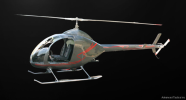That may be the most creative "high-wing/low-wing argument" I've heard yet

Sorry, I'm going to disagree on a number of points. The only thing I ever found more difficult in a 172 than a PA28 was the first time I turned downwind in one. I wondered where the heck the runway went. Other than that it was a non-event to me as a month-old private pilot.
Free-castering nosewheels are not just on LSAs but certificated airplanes too - Cirrus, Diamond, and Tigers come to mind. I do a lot of transitions into the Diamonds (and taught in DA20 also). Except for the first 5 minutes of taxiing, the free-castering nosewheel is a non-event, particularly on landing. The DA40 in particular is one of the easiest airplanes to land in a significant crosswind.




